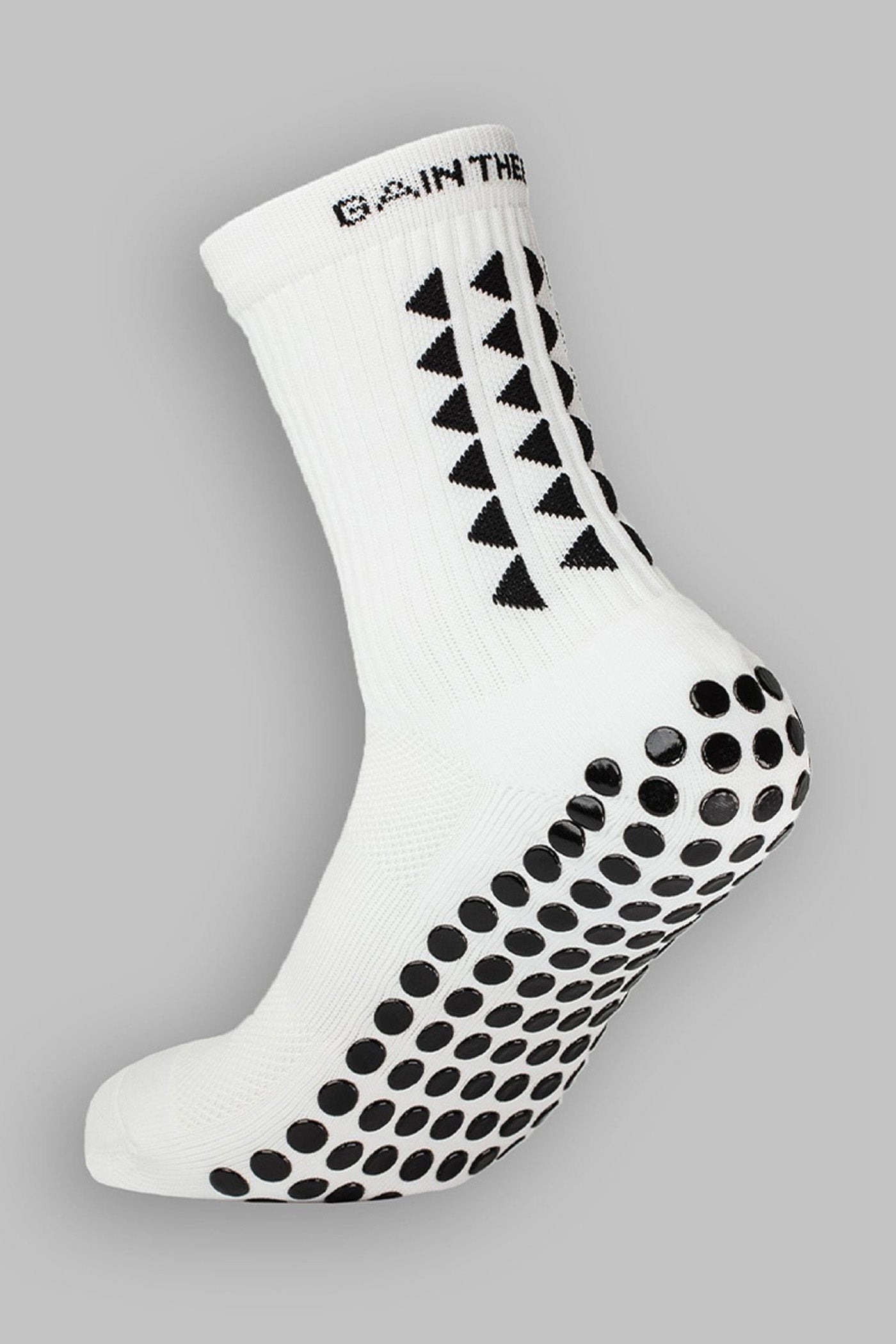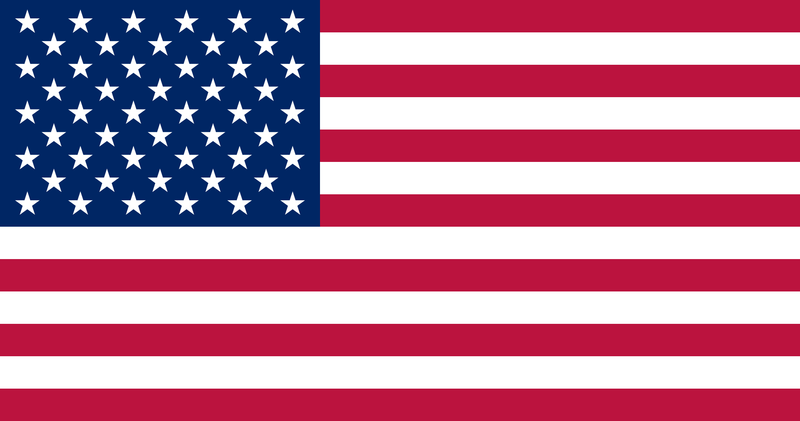When it comes to the compression socks vs sleeves debate, it's hard to find a definitive answer. Both compression garments have their pros and cons, and wearing compression socks or sleeves can have vastly different outcomes.
Today, we’ll clear up the air. This in-depth guide will cover the technical difference between compression socks and sleeves, the pros and cons of each, and which type of compression is better for who. We’ll also provide a third option that offers the best of both worlds.
What this article covers:
Compression Socks Versus Sleeves (Compared)
Here is a quick overview of the differences between compression socks and compression sleeves.
|
Compression Socks |
Compression Sleeves |
|
|
Compression Levels |
Full compression scale from 8 mmHg to 50 mmHg. Also available in mild, medium, and firm. |
Usually only higher compression levels like medium and firm. |
|
Length |
Sock cuff can reach anywhere from the ankle to mid-calf. The foot is covered. |
Covers the entire calf and stretches to below the knee. The foot is uncovered. |
|
Compression Benefits |
|
|
|
Area Of Support |
Compression socks focuses the banding on the bridge of the foot and around the ankle. |
Compression sleeves focus on banding around the calf. |
|
Price |
Affordable over the counter options, mid-range options, and medical grade options. |
Less over the counter options. More mid-range to medical grade options. |
|
Style |
Comes in a variety of colors and with many pattern designs. |
Usually not as varied in color and design but has a very attractive sporty look to them. |
Compressions Levels
Compression garments come in different compression levels. The compression level determines how much pressure the garment exerts on the person wearing it.
The compression levels are mild, medium, and firm. But there are also compression sock mmHg levels, which range from 8 mmHg to 50 mmHg. Eight is the lowest compression level and 50 is medical-grade firmness.
This mmHg system is used to medically measure and grade compression socks and sleeves to ensure the right pressure for the right people.
Compression socks come in all compression levels, from mild (8 mmHg) to the highest, firm (50 mmHg). With a full range of compression levels, it’s easy to find compression socks for all your needs. Because there are low compression sock levels, it’s also safe to wear compression socks all night and for long periods.
Compression sleeves also come in a variety of compression levels. But because they tend to require more pressure to stay on the calf and provide muscular support, it can be hard to find compression sleeves that provide low-level pressure that’s safe to wear for a long time.
Not having as many compression sleeve-level options limits how people can use them, especially people who want long-term support during the day.
Compression Aims
Compression socks and sleeves aim to improve the wearer’s health and there is a lot of overlap between the benefits of both compression garments.
Both compression socks and sleeves:
- Improve Blood Circulation: Socks and sleeves exert pressure on the leg, which improves blood circulation in the leg. Unfortunately, because compression sleeves leave out the foot, this increased circulation isn’t as clearly felt with the sleeves.
- Provide Muscle & Tendon Support: Both options provide firm muscle and tendon support. But compression sleeves provide more concentrated support around the calf.
- Provide Exercise Support: Socks and sleeves can help an athlete struggling with an injury, from a muscle tear to a healing tendon.
- Promote Post Workout Recovery: Socks and sleeves increase blood flow, which provides energy and oxygen to muscles after a workout. This helps athletes recover quicker after strenuous activity.
While this is great, compression socks do provide more health benefits than compression sleeves. They improve lymphatic drainage, reduce swelling, and prevent issues like spider veins.
Many people wear compression socks for long hours of sitting or walking because the support and increased blood flow prevent swelling and muscle fatigue. It’s also for this reason that many athletes have made compression socks a staple of their workout gear.
Besides these everyday benefits, medical-grade compression socks work wonders for more severe issues like post-surgery recovery and wound management. It’s also used to treat blood clots and deep vein thrombosis.
Wear Time
Compression sleeves and compression socks are meant to be tight. It’s this pressure that helps so many people with injuries and everyday muscle and circulation struggles. But compression socks and compression sleeves have different effects over long periods of wear.
Compression socks, even in higher mmHg, are safe to wear for long periods. In fact, it’s better to wear them for long periods because extended wear reaps the most benefits. It’s even fine to wear compression socks to bed in certain cases.
Compression sleeves, on the other hand, can’t be worn for more than a few hours at a time. The compression sleeve cuffs–the bands at the top and bottom of the sleeve that grip the leg and hold the sleeve up–can be dangerous for your leg.
The cuffs are tighter than those on compression socks because they need extra grip to stay suspended on the calf. Unfortunately, it means you can’t wear compression sleeves for as long as you can socks. It’s better to only wear them during strenuous activities.
Another issue is decreased circulation. Because of this tight cuff and the difference in circulation between the covered calf and uncovered foot, compression sleeves can cause circulation issues that work against the original goal of the sleeve if worn for too long.
If you would like to know more, we have an in-depth guide on how long you should wear compression socks that could help you make the most of your socks.
Length & Support Area
Compression socks are shaped like normal socks, like these purple football socks. They’re a tube that covers the foot from toe to ankle and then encases the leg. Compression socks can be anywhere from ankle length to mid-calf length.
Because of this shape, the banding–tight compression bands built into the sock–provide more support to the ankle and the bridge of the foot. They also provide overall foot support but struggle to support the calf muscle because the length falls short.
Compression sleeves only cover the calf. They slip over the foot and pull up to just below the knee, and leave the ankle and feet uncovered.
For compression sleeves, the focus is the calf muscle. The banding is focused around the bulk of the muscle and leaves out the foot and lower leg.
Both compression garments provide great support but for different parts of the leg and foot. Where you need the support should help you determine the type you need.
Price
Compression garments can be expensive, especially when purchasing medical grade ones.
Fortunately, compression socks can be found relatively cheap. Because compression socks are used by so many people, there are more affordable sock brands on the market, a variety of compression sock sizes, and even more design options.
They’re also more affordable because there are more low mmHg compression socks. Higher mmHg compression socks require more expensive materials but with so many low-compression options, it’s easy to find an affordable compression sock that works great.
Medical-grade compression socks have also become more affordable with the addition of durable synthetic materials and an increase in production.
Compression sleeves, on the other hand, tend to be a bit more expensive. The biggest reason for this is that compression sleeves are specialized.
Unlike compression socks, which are used by everyday people, athletes, as well as people with injuries, compression sleeves are mostly used by people who are recovering from an injury, whether after an operation or a sporting event.
There are more medical-grade compression sleeves than affordable ones, which means you’re likely going to struggle to find a good and affordable low-compression sleeve. It’s not impossible, just a tad more difficult.
Compressions Socks or Sleeves?
Both compression socks and compression sleeves are extremely useful. They overlap in many regions and provide similar health benefits. But there is enough difference between the two to recommend them for different needs.
Next, let's cover compression socks and sleeves, why they’re great, and who they’re right for.
Compression Socks
Compression socks have been around for decades and have proven their worth over and over again. From minor injuries to post-surgery wound management, they’re extremely useful tools for health and healing.
One of the biggest benefits of compression socks is their overall support. They provide complete foot, ankle, and lower leg support that improves blood flow and supports muscle health.
Besides their usefulness, they’re also aesthetically pleasing. There are many compression socks on the market and it’s easy to find a sock that fits your aesthetic needs as well as your health ones.
The last thing we love about compression socks is their accessibility. It’s easy to find compression socks that are both high quality and affordable.
Why They’re Great
- Variety of compression levels to choose from.
- Has many health benefits for both everyday needs and severe injuries.
- Provides full foot and ankle support.
- Affordable compression sock options at every mmHg level.
- Many design options for all aesthetics.
Who They’re Right For
- Athletes or everyday people who need support to prevent muscle fatigue, swelling, and injury.
- People with circulatory issues like DVT, blood clots, spider veins, etc.
- People who have suffered an injury or underwent surgery who require wound support.
Side note: always consult your doctor before wearing compression socks for a severe injury.
Compression Sleeves
Compression sleeves provide some of the health benefits of compression socks but from the ankle to below the knee. They’re very useful for injury prevention and have become a staple for many athletes.
The biggest benefit of compression sleeves is their concentrated support. They provide pressure around the leg which focuses on the calf. It provides great muscular support while also stabilizing the bone and tendons.
While compression sleeves don’t provide as many health benefits as compression socks, there is no denying their effectiveness for injury prevention and treatment.
Why They’re Great
- Concentrated support around the leg.
- Muscle and tendon support that’s great during and after strenuous activities.
- Short but effective support.
Who They’re Right For
- People who do high-intensity workouts or training.
- Athletes that struggle with shin splints.
- People who don’t like the feeling of a compression sock on their feet.
Bonus Option Three: Long Compression Socks
If you found yourself struggling between compression socks and compression sleeves, then we’ve got good news for you–there’s a third option.
Long compression grip socks have the best qualities of both compression socks and sleeves. It covers the foot and ankle but also encases the rest of the leg to provide full lower-leg support.
These types of compression sock and sleeve combinations are extremely helpful for athletes who require all-day support or who want to capitalize on the advantages of both socks and sleeves.
They also make great socks for people who spend long hours sitting or standing and are great compression socks for the elderly.
Long compression socks are the best of both worlds. To make matters even better, long compression socks are affordable and come in both eclectic and neutral designs.
Why They’re Great
- Provides the foot and ankle with circulation, muscle, and tendon support.
- Provides the calves with circulation, muscle, and tendon support.
- Can be worn for long hours because the foot is also covered.
- Health benefits of both compression socks and sleeves.
Who They’re Right For
- Athletes who need complete lower leg support to prevent or treat injuries.
- People who sit for long hours or walk and travel long distances.
- Injured individuals in need of full leg support to increase healing.
Conclusion
The compression socks vs sleeves debate has been raging for years. But after this guide, it’s clear that both socks and sleeves offer their own set of benefits. All you need to do is find the one that meets your needs.
Fortunately, there is also the third option of long compression socks, which work as a combination of both compression socks and sleeves.
Whichever socks you choose, there is no doubt that compression garments provide valuable support for everyday folk, athletes, and injuries.
Did our blog meet your needs? You might also find our other guides helpful:
- What Do Compression Socks Do?
- Best Compression Socks
- How to Put on a Compression Sock
- How Long Does It Take for Compression Socks to Work?
- How to Wear Compression Socks
- What Are Crew Socks?
- Socks as Gifts
- What Are Ankle Socks?
- How to Wear Grip Socks
- Best Sock Material
- What Do Grip Socks Do?
- Best Running Socks
- Running Socks: Women
- Do Running Socks Make a Difference?
- Best Walking Socks

















